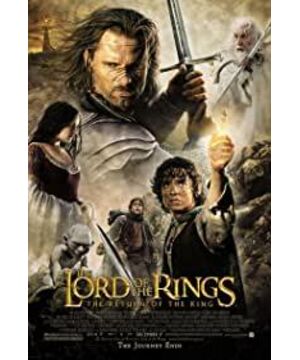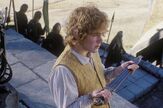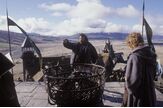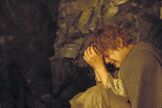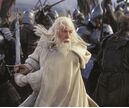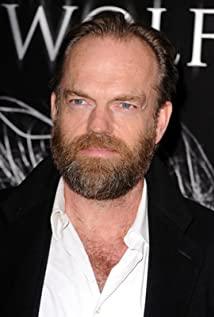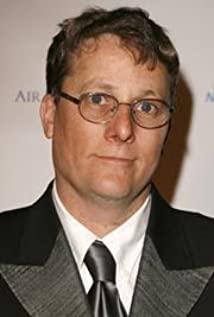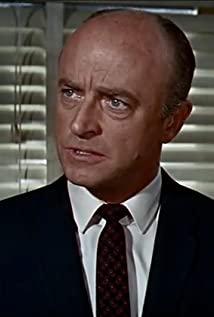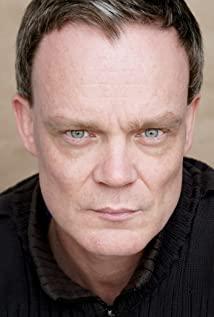The image of the "Lord of the Rings" clearly comes from the second volume of Plato's "Dreamland": In a dialogue about whether people should live a righteous life, Socrates' disciples told a story: the shepherd Gyges After an earthquake, he fell into a rift and found a ring that would be invisible when worn. He used this ability to seduce the queen, kill the king, and rule the kingdom (this story comes from Herodotus's "History", but the image of the invisible ring comes from "Utopia").
This story raises a terrible question: if people can do evil without being discovered and then unpunished, will people choose justice? Why should people choose justice? If this question cannot be answered, then the teachings of various ethics can be thrown into the garbage.
In "Utopia", Socrates' answer is that justice itself (not its consequences) is worthy of choice. Only in this way can the soul get real happiness. But this answer is obviously a little self-confident to modern people who know that there is no "soul".
"Lord of the Rings" re-discussed this issue in an incredible way: Frodo returned to the birthplace of the Lord of the Rings-note that it was also a "rip"-destroying the Lord of the Rings in the lava of the volcano. But at the last moment, he was also eroded by the magical nature of the Lord of the Rings, and instead put on the Lord of the Rings, "The ring is mine".
Although the three parts totaled more than 10 hours in length, human nature flashed with dazzling brilliance countless times (Boromir sacrificed to protect everyone, Gandalf and the Balrog died together...), at this moment it seemed that human nature had failed.
But the reversal suddenly appeared: Guru and the invisible Frodo fought for the Lord of the Rings, and then fell into the magma with the Lord of the Rings. This is a wonderful arrangement: Guru's greed saved the world. But if Frodo hadn't thought of Gandalf's words before and left his life, then this rescue would never happen.
This formed a peculiar order: as if there was a kind of magical "will" in the dark, Frodo's kindness at the time heralded the final outcome. This is the fate of Guru and Frodo. Gandalf has long pointed out that in this difficult journey, Guru will play a certain role (may have something to do).
Not only the ending part, but the entire story of "Lord of the Rings" is a huge symbol: the Lord of the Rings possesses magic power, but while using this magic power, people are gradually captured by it, and eventually they lose their freedom, which will harm others and themselves. Like all technologies in modern society, they help mankind transform nature, but while "liberating" mankind, they also capture mankind.
Just as the greedy dwarves dig deeper and deeper, eventually releasing the ancient demons hidden in the ground. Modern plagues such as environmental pollution, energy depletion, natural disasters, and the new crown are all challenges triggered by humans "dug deeper and deeper".
In this sense, we can say that the atomic bomb is the Lord of the Rings, the nuclear technology is also the Lord of the Rings, and the genetic modification technology is the Lord of the Rings...
The Lord of the Rings tempts and challenges the fragility of human nature, and the ending of "Lord of the Rings" seems to say: nature, seemingly disorderly nature, has a kind of rationality, a kind of rationality that transcends human rationality. Obeying natural reason will naturally lead people to the best possible outcome. But such guidance can only appear after human beings do their best, just like Gandalf’s "resurrection from the dead"——
Gandalf fought with the Balrog in the mine. He said, "You shall not pass", and then the flames of the Balrog pulled him into the abyss. This should be the most tear-jerking scene in the first part of "The Lord of the Rings", just as Obi-Wan was "destroyed" after being hit by a lightsaber in the fourth part of "Star Wars".
Such moments are part of the "growth" motif: the death of the father's character will force the protagonist to embark on his destined journey.
But Gandalf was not dead. He came back on a white horse in a white robe. He is like a god, bringing new power to overcome evil. This is an obvious religious metaphor: first, hope always exists; second, hope will emerge at the end of despair; finally, hope is obtained through hopeless, desperate sacrifice.
Going back to "Ideal Land", in the discussion that started in the Gyges story, the image of two people appeared: a person has lived a life of justice, but has been misunderstood and oppressed, and died of poverty; the other person has not lived all his life. He lives righteously, but he pretends to be righteous and gains money, honor, and status.
The former person, his image later became Jesus. The latter person is obviously a tyrant. However, people have to ask, why does an ordinary person live the former life?
Frodo's loyal friend Sam has an answer: It's not that people want to pursue greatness, but that the life course of ordinary people is just like those great stories. "Those were the stories that stayed with you, that meant something."
It is difficult to find another "normal" epic movie protagonist like Frodo. He has neither born a storm nor unlocked the dragon. He also has no otherworldly will. By the end of the movie, he was dying even tortured by the Lord of the Rings, relying on his good brother Sam to carry forward.
But in the process of escorting the Lord of the Rings, the mental and physical frustration experienced by Frodo is also the epitome of the rain, snow, wind and frost that ordinary people have to experience in their ordinary life. And his journey tells us that the important thing is not the ending, but the persistence to the end. This is why "Lord of the Rings" is so touching.
The most amazing moment of "Lord of the Rings" is the moment when the big round eyes of Guru's little friends appeared in the dark in the first part. He is so ugly, yet so real and smart. It is no exaggeration to say that at that moment I was so strong, thrilling and breathless, and praised the inventor of the medium of film-this is a dream that only film can create. The image of Gollum is realized by capturing the movements of actor Andy Serkis. 20 years ago, this was a new technology.
And such dreams can be seen everywhere in "Lord of the Rings". The joyous land of Shire filled with green, the white, gothic capital of Gondor...Thanks to the green and snow-capped mountains of New Zealand, let us follow the squadron of the ring of new scenery everywhere.
The magnificent presentation of Middle-earth in "Lord of the Rings" does not rely on CGI. On the contrary, when shooting contrasts between small hobbits and tall elves, the camera angle is often used. This retains an unparalleled sense of realism.
This sense of realism runs through.
During the long journey of the team to the Devil’s Cave, we in front of the camera will be convinced that they are traveling a long distance, instead of "Game of Thrones" where there are portals everywhere, because as people move forward, we are already familiar with their figures. , But the contrast between them and different environments is constantly changing. Just as in a mine, the moving squad looked so small, but when the war came, there were no people in the overwhelmed army. The sense of distance created by this change is true and credible.
Reality is only the bottom line. Fundamentally speaking, the visual charm of "Lord of the Rings" is that it does not create one scene after another, but one view after another.
Not only the real mountains, but the inaccessible and intimidating mountains, not only the clouds, but the clouds and mists that make people feel impossible to cross and obscure the sun.
This vision is not only created by the movement of the characters and the changes in contrast, but also creates an extraordinary experience with the latter-as if there is a Middle-earth world somewhere in this world, as if we are really in the world. Recall the epic of a hero that once appeared on the earth.
In this world, miracles seem commonplace. Miracles can occur at any time, miracles can occur anywhere. When the enraged troop of trees rises up and "the seven armies are flooded", we are clearly in a world of animism that has been described in Western and Eastern philosophies. And when the army of the undead comes in mighty, it is not as ugly and terrible as other movies and TV series of the same theme (such as the ghoul in "Game of Thrones", such as the undead in "The Legend of Merlin"), but just spectacular.
In this way, the solid images and the philosophy of life are intertwined, forming the unique charm of "Lord of the Rings". The original author and creator of Middle-earth, Tolkien himself is a scholar at Oxford University. His background in medieval linguistics and philosophy has given "Lord of the Rings" rich philosophical connotations, and also vaguely about hope, despair and The religious core of salvation.
But even without starting from a philosophical and religious perspective, it is still obvious that "The Lord of the Rings" is about human spiritual adventures. It reveals how happiness is possible and why a righteous life is worth choosing.
(First launch of WeChat public account of Weier)
View more about The Lord of the Rings: The Return of the King reviews


